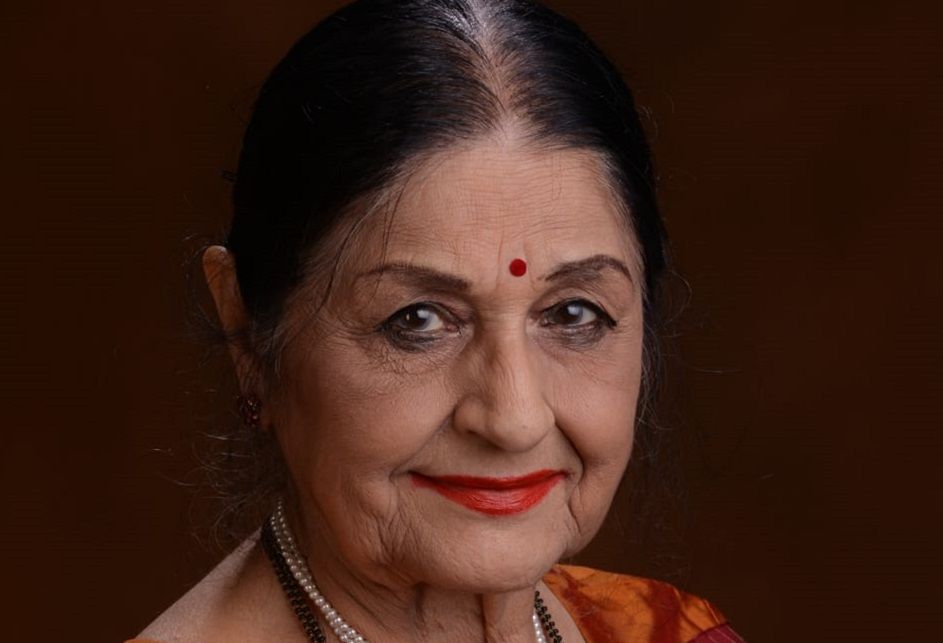Guru Kanak Rele’s role in popularising Mohiniyattam has been singular.
Dr. Kanak Rele, a prime revolutionary in the field of Mohiniyattam dance, guru, and choreographer whose name became synonymous with Sopanam style of the lyrical dance form of Kerala, died today moring at a private hospital in Mumbai. She was 85 years old.
Frequently ranked with other stalwarts of Mohiniyattam, Dr. Rele was instrumental in catapulting the dance form to the center stage of the country.
Yet ultimately her genius was embodied in her choreographic masterworks and her invention of a new and codified dance language.
She developed a form of expression that broke the traditional mold and became the most honored figure nationally in this art form as she was the first Mohiniyattam exponent to be honoured by Kendra Sangeet Natak Akademi and by the Government of India by conferring on her Padmashree and Padmabhushan.
Masterworks and invention
Rele was successful in recreating the dance form based on the traditional and technical format which she could ferret out from the film and further in evolving a teaching methodology too.
Powerful, dynamic, and filled with nuanced expression, her dancing vocabulary combined with a distinctive system of training set her above other dance innovators. Her deep research on the kinetics of the dancer, based on the movements of volution (geometrical patterns) and revolution (spiral) so characteristic of Indian classical dances and an analysis of the audio and film documentations against the backdrop of Natyasastra, Hasthalakshanadeepika and Balarama Bharatam gave shape to the ‘Kanak Rele School’ of Mohiniyattam. Incidentally, Kanak Rele was the first Mohiniyattam researcher to identify Karthika Thirunal Bala Rama Varma’s work of the 18th century, Balaramabharatham, which could shed much light on the indigenous intricacies of Kerala dances. The book has been described as the Natyasastra of Kerala.
The ‘Kine-aesthetics’ was propounded taking advice from experts belonging to all disciplines including medical science. The monumental work further fetched her PhD from the University of Mumbai.
While she had dwelt at length on the prayoga of the dance form in the first edition of the book ‘Mohini Attam – The Lyrical Dance’ (1992), she has been successful in building up a sastra in the revised edition (2013) which is logically and aesthetically perfect.
The other work ‘Bhava Niroopana’ (1996) is a comprehensive account of the theoretical basis of abhinaya and it further traces the development of our religious thought and its influence on aesthetics. Small wonder, the two books are followed in institutions all over the country including Kerala Kalamandalam Deemed to be University for the undergraduate and post-graduate classes.
Apostle of Sopanam style
Her foray into Sopana Sangeetham happened after meeting Kavalam Narayana Panicker in 1982. She argued that Sopana sangeetham was most suitable for Mohiniyattam because the most important characteristic of Sopana sangeetham is the element of andolika (oscillating) movement of music. She explained, “In the initial stages of my work in Mohiniyattam, I also used the Carnatic musical pieces with their swara-sahithya pattern and crisply recited chollus (mnemonics). But I experienced many rough edges with sudden jerkiness in the dancing which was not intentional but was prompted by the music and tala system.
“In many instances, the intense emotionalism that was required from a Mohiniyattam exponent could not be taken to its logical fruition due to a lack of support from the music. It is only when I started working with Sopana Sangeetham that things arranged themselves in the proper shapes and hues,”she said in an interview. “My inspiration to the myriad productions to highlight the trauma of women in the society based on women characters in the mythology has been Kavalam’s compositions”.
An ace choreographer, all her works have been anchored on Sopana ragas and talas. She has to her credit seven categories of repertoire: 1. Invocation (7), 2. Nritta (8), 3.Padam (14), 4. Ashtapady (6), 5.Chitrakavya (4), 6. Nirampadal (6) and 7. Sloka (6). Admittedly many of them are compositions of Kavalam Narayana Panicker including the music. Also, there is a series of choreographies on the legendary women which are thirteen in number.
Establishing Nalanda
Nalanda Dance Research Centre (1967) of which she is the director has been recognised as a Scientific and Industrial Research Organisation by the Ministry of Science and technology of the Government of India. This is the only dance institution in the country to be awarded this prestigious honour. Meanwhile, Nalanda Nritya Kala Mahavidyalaya (1972) was established for the popularization of her style. Thanks to her persevering efforts the institution was affiliated to the University of Bombay. Admittedly, the institution was the first in the country to award university degrees of BFA, MFA and PhD in Mohiniyattam. The institution can boast of a well-equipped studio and “Nritya Bharati”, a documentary of seven Indian classical dances produced by Nalanda, has been acquired by the Ministry of External Affairs as an official capsule for all Indian missions abroad.
Throughout her career, Kanak’s fundamental tenet was that Mohiniyattam should reach audiences through a visceral response. Her encyclopedic approach to the dance often carried several levels of meaning and startled a public that defined the art form in linear terms. Dr. Kanak Rele was the living proof of renowned dancer Martha Graham’s adage: “No artist is ahead of his time. He is his time; it is just that others are behind the time.”

